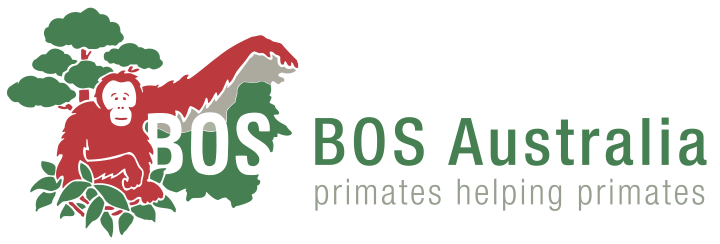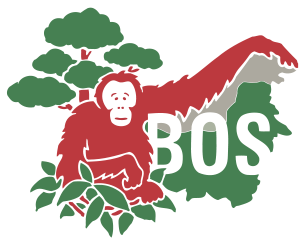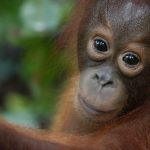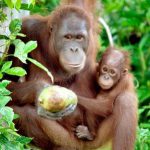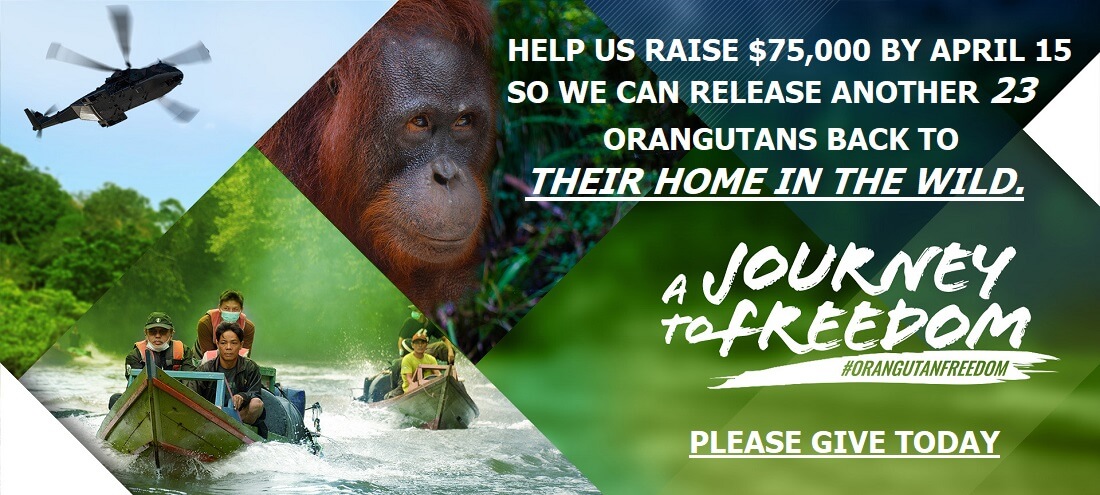DENTAL CARE FOR ORANGUTANS

Just like humans, orangutans also require proper dental care, including regular check-ups and specialized treatment.
Recently, Herkules, one of the male orangutans in our rehabilitation centre, underwent a dental operation to address problems with his teeth, including caries and fractured root teeth. These issues require special care, as they can cause pain and infection and disrupt the orangutan’s eating habits.
What Are Caries and Fractured Root Teeth?
Dental problems, such as cavities and fractured root teeth, are not limited to humans; they can also affect primates, including orangutans. Caries is a condition caused by bacterial activity on food residues. These bacteria produce acids that erode the tooth enamel, creating cavities. On the other hand, fractured root teeth refer to a condition where the tooth root cracks or breaks, often due to trauma or excessive pressure on the tooth.
In humans, common causes of fractured root teeth include chewing on hard objects, direct trauma to the mouth, or overuse of teeth, such as when eating very hard foods. Similar factors can cause fractured root teeth in orangutans. In both natural habitats and rehabilitation centres, orangutans sometimes chew on branches, wood, or other hard objects. Unbeknownst to them, this behaviour can damage their dental structure. With a 97% genetic similarity to humans, orangutans share almost identical dental anatomy, making it unsurprising that they face similar dental health issues.
Dental Surgery for Orangutans
Before our experienced medical team performed the dental procedure on Herkules, they sedated him and gently transported him in a wheelbarrow from his enclosure to the operating room. General anesthesia was necessary to ensure the male orangutan remained calm and pain-free throughout the procedure.
Our veterinarians began by cleaning the affected area and examining the condition of the other teeth. The operation involved several key steps: tooth extraction, cleaning and disinfection, and wound closure. The extraction of teeth with fractured and damaged roots is performed carefully. It also involves using specialized tools to avoid damaging the surrounding tissues.

Orangutans, like humans, grow two sets of teeth: 20 baby teeth followed by 32 permanent teeth.
After the veterinarians extracted the tooth, they clean the area to eliminate bacteria or any remaining tissue that could cause an infection. Next, they suture the extraction wound using a special, safe thread that will dissolve on its own after a few weeks. The procedure demanded high precision, as the anatomy of an orangutan’s oral cavity is similar to that of humans but with larger dimensions.
Post-Surgery Recovery Process
Following the surgery, they transferred Herkules to a recovery room within the rehabilitation centre’s clinic. The next step taken by our veterinary team was administering antibiotics and pain relievers to alleviate discomfort following the surgery.
In addition, this male was put on a soft diet for several weeks to reduce the strain on his oral cavity. Our medical team also conducted regular monitoring to observe the progress and healing of his wounds. Within approximately one month, Herkules began to recover fully. He could chew hard food again and displayed signs of vitality as usual.
The Importance of Dental Care in Orangutans
Dental care is not only vital for humans but also for primates like orangutans, especially those in rehabilitation centres. Untreated dental issues can significantly impact their health and well-being, particularly regarding their ability to eat and survive.
Furthermore, this case highlights the many similarities between humans and orangutans, including health. Therefore, conservation efforts like rehabilitation and health monitoring are crucial to ensuring their well-being. With the dedicated hard work of our medical team, Herkules can now live comfortably and pain-free, a testament to the importance of ongoing conservation and healthcare initiatives for these remarkable primates.
